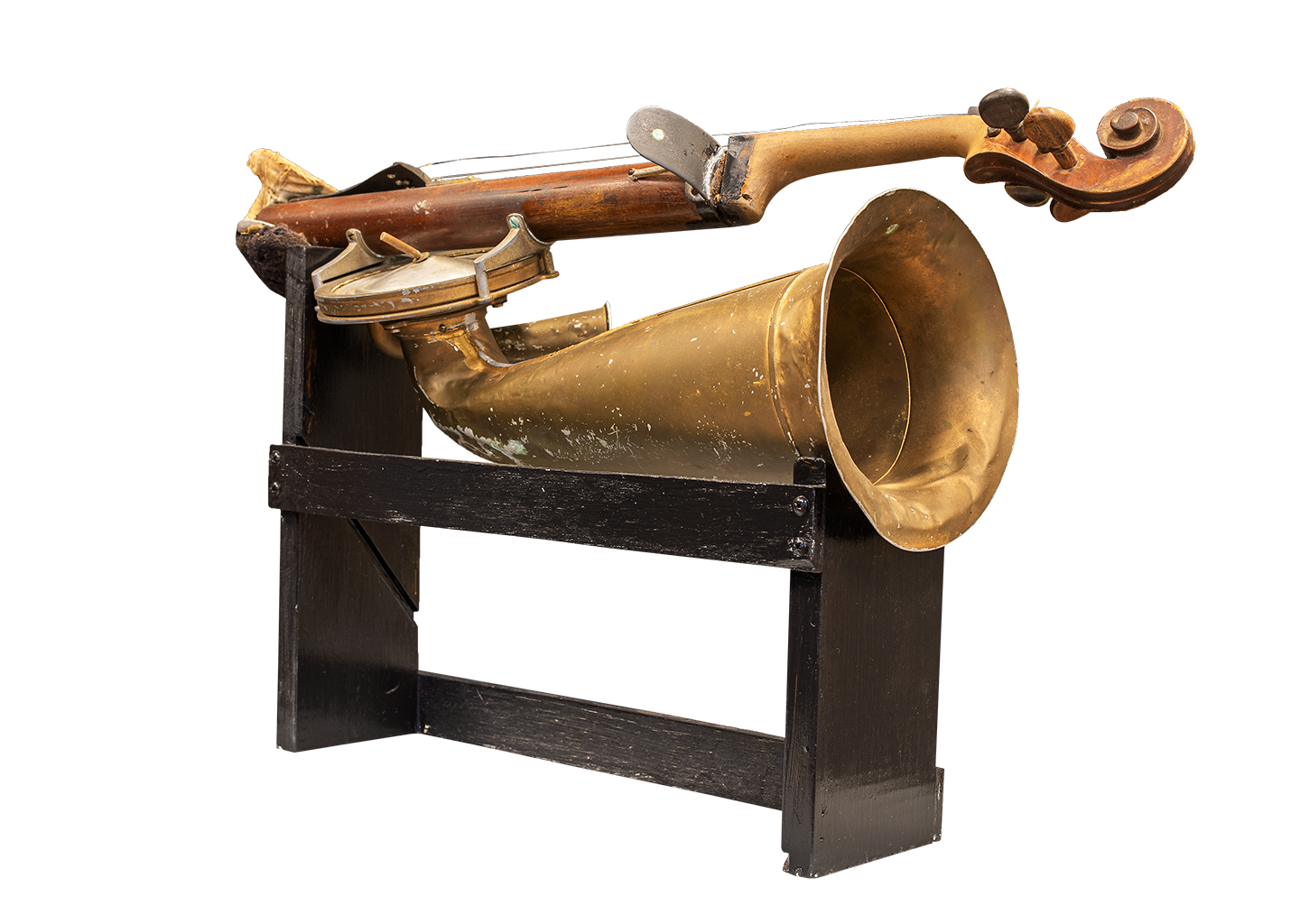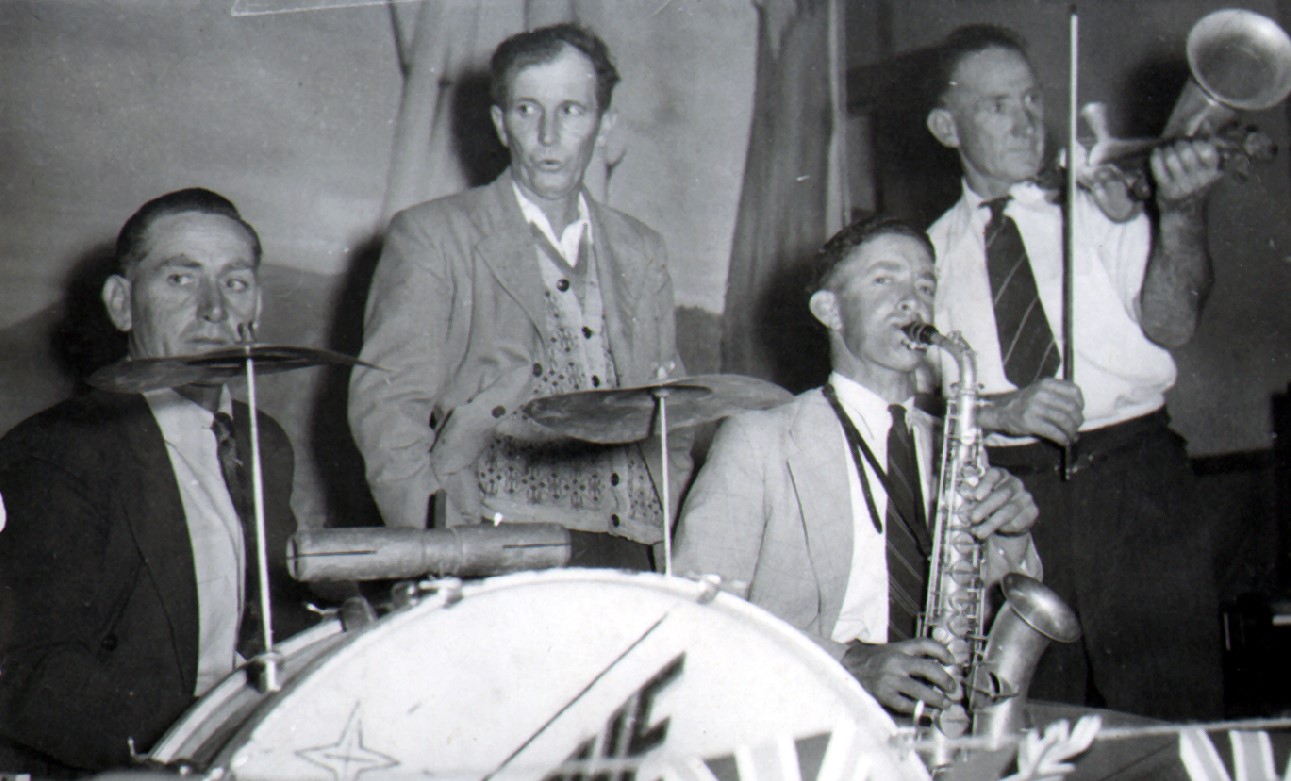This Stroh violin is made of wood and aluminium. It incorporates a vibrating diaphragm and has two horns – one positioned at the end of the fingerboard to project the sound to an audience or recording horn and a smaller monitoring horn that allows the player to hear their own sound more clearly. Its bow, however, is missing.
Patented in London by Johannes Matthias Augustus Stroh in 1899, the Stroh violin was much louder than a standard wooden violin and was invented specifically to overcome the limitation of the early recording devices by concentrating sound in one direction only. Once electronic recording was invented, they became obsolete. Stroh violins were also known as jazz violins or resonator violins. The Stroh violin was an expensive instrument and was on sale in London in 1911 for nine guineas compared to two guineas for a reasonable factory violin. It was listed as being especially useful for use in small theaters and halls.
This violin was played by Jim Mullard [1904-1965]. The Mullard family had a dairy farm at Comboyne where Jim was known to teach violin and piano to local students. From the 1920s, Jim, together with his brother William, known as Bill, played in local dance bands including the Nite Lites, Bluebird orchestra, and the Hep Cats. Live music was a big attraction and Jim Mullard’s somewhat rare and exotic musical instrument no doubt added to the evening’s entertainment. The violin is now in poor condition. It reportedly and sadly came to the end of its playing life when an inebriated dance patron sat on it.
The period 1880 to 1915 saw the building of many community halls in the district. These were principally used as social meeting places. Music for these occasions was usually provided by amateurs and varied greatly in quality and quantity. After World War 1, balls and dances became increasingly popular, and musicians began to form bands and orchestras. The Mid North Coast formed a suitably sized circuit for bands to play up and down the coast at a large number of dances. The principal venues were Taree, Wingham, Gloucester, Forster, Tuncurry, Kempsey Port Macquarie, and Sawtell. The hey-day of these dance bands was from the mid-1930s to the late 1960s – a period that covered Jim Mullard’s musical working life.

